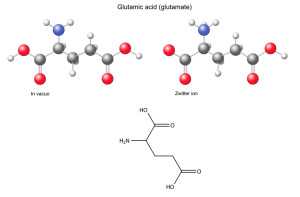Glutaminsäure
Die Glutaminsäure kommt in allen eiweißhaltigen Lebensmittel vor und wird häufig als Glutamat, ihre Salze oder Ester, benannt. Diese Glutamate sind bekannt als Geschmacksverstärker und die Glutaminsäure (E 620) wie auch Ihre Salze (E 621- 625) sind als Lebensmittelzusatzstoffe zugelassen. Hohe Konzentrationen von Glutamaten findet man in Tomatenpüree, Käse (z.B. Parmesan) und Fleisch.
Die Glutaminsäure ist einer der wichtigsten Neurotransmitter und wird dort zu Glutamin über Glutamat im Kreislauf zur Erregung verwendet.
In der Kosmetik kommt Glutaminsäure als Ester in verschiedenen milden Tensid-/Emulgatorprodukten zum Einsatz (TEA-Cocoyl Glutamate, Sodium Cocoyl Glutamate, Sodium Lauroyl Glutamate, Disodium Cocoyl Glutamate, Sodium Stearoyl Glutamate, Potassium Lauroyl Glutamate) oder als Ceramidersatz (Phytosteryl/Octyldodecyl Lauroyl Glutamate, Eldew PS-203R und Phytosteryl/Beheryl/Octyldodecyl/Isosteary Lauroyl Glutamate, Eldew PS-308 von Ajinomoto).
Quellen:
- „Sodium Cocoyl Glutamate, an Emulsfying Agent for Cold Production of O/W Emulsions“, SOFW 04-2005
- „Percutaneous Absorption of Amino Acids into Human Skin“, SOFW 01/02-200
- eigene Recherche
Weitere Infos zu anderen Aminosäuren.

